
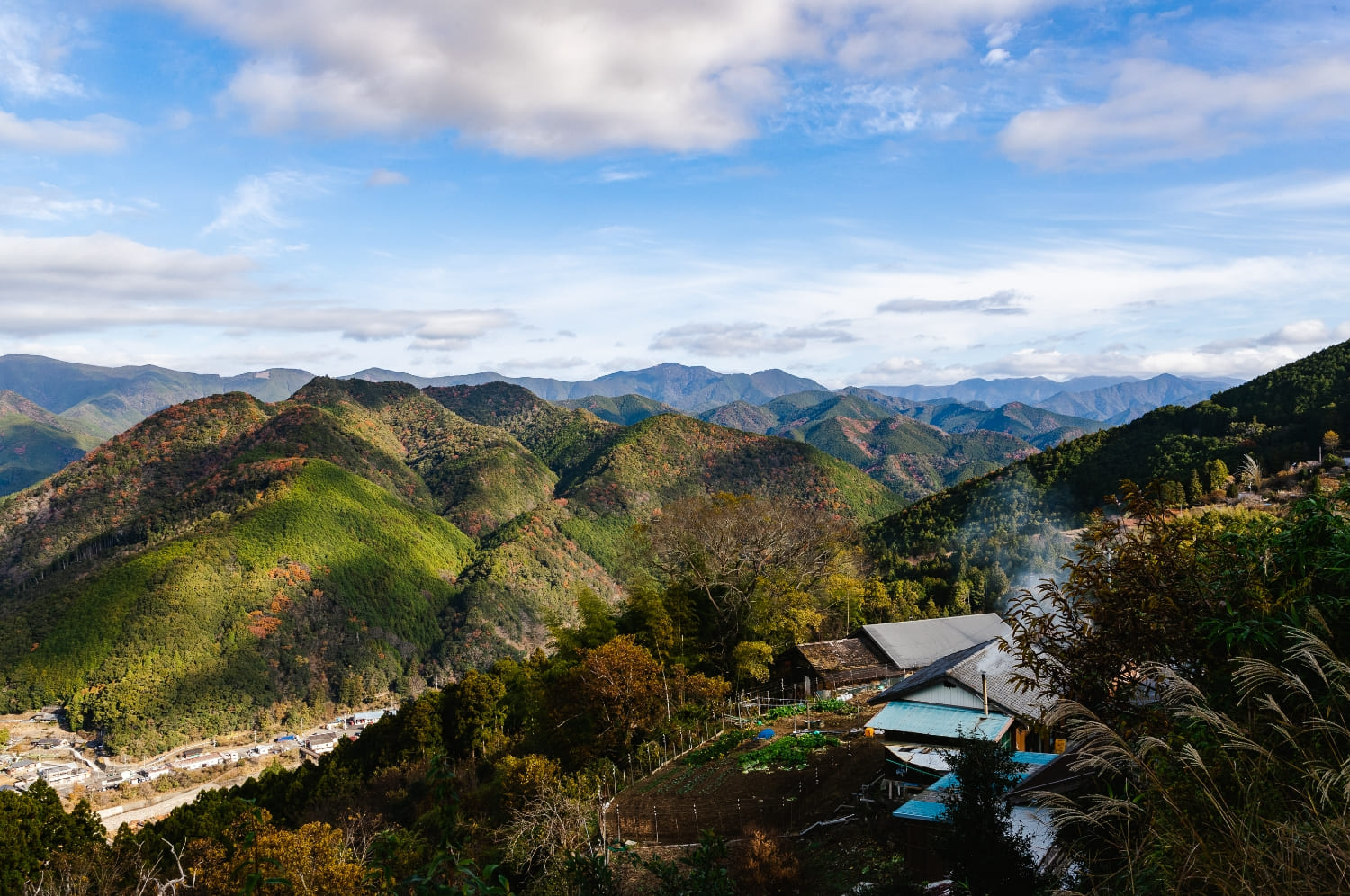
Discover the history of the Kumano Kodo! What are the ‘99 Oji Shrines’? Plus, recommended routes to explore.
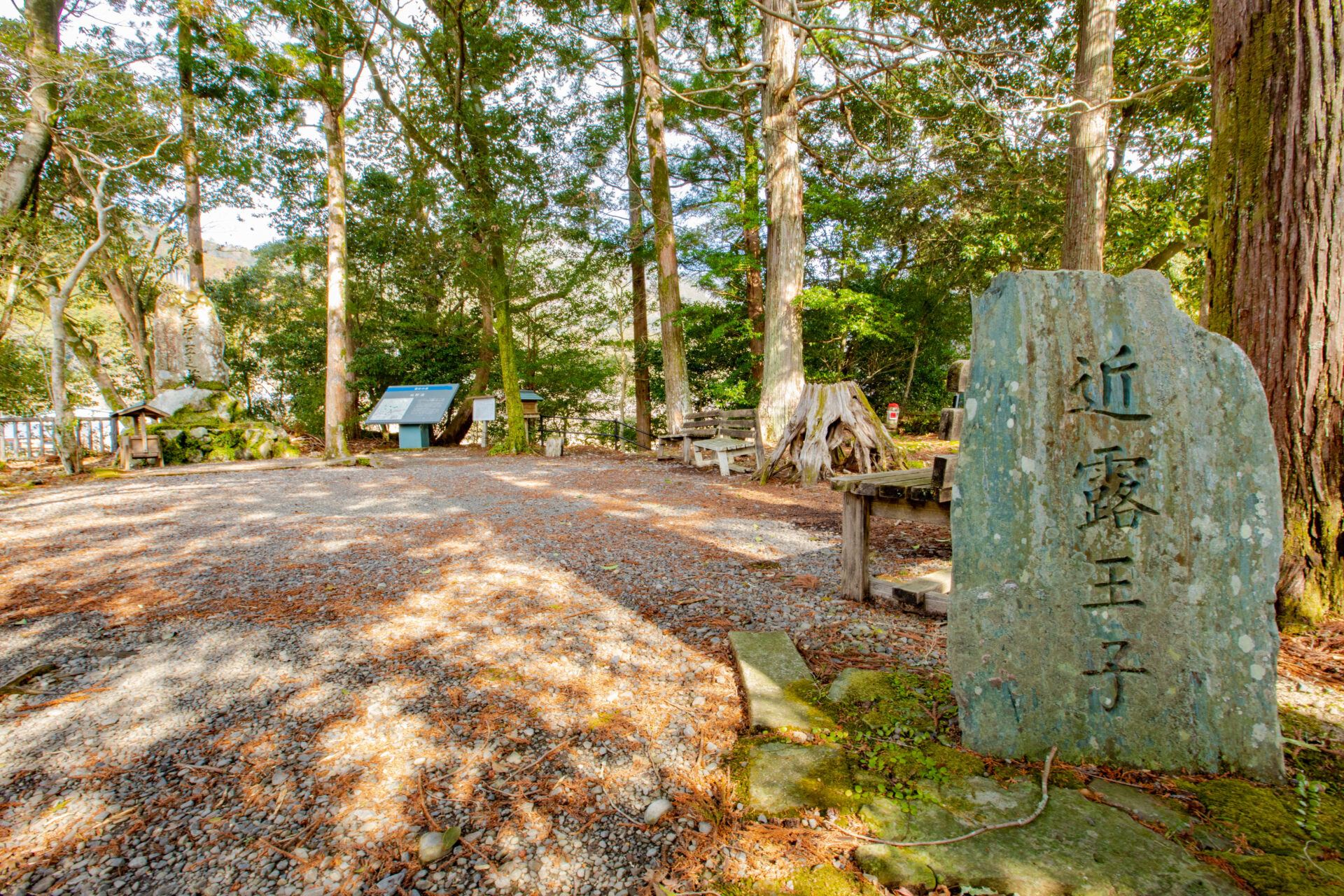
As you walk along the Kumano Kodo pilgrimage routes, you’ll encounter many historic sites called “Oji” or “Oji shrines.” Some remain only as stone monuments marking the ruins of Oji, while others still stand as shrines. Each site is deeply connected to the spiritual history of the Kumano Kodo and offers a glimpse into Japan’s ancient pilgrimage culture.
In this article, we explain the history of the Oji shrines, provide the complete list of the 99 Kumano Oji, and introduce the best trekking and walking routes where you can experience these sacred sites along the Kumano Kodo.
What is an Oji shrine on the Kumano Kodo?
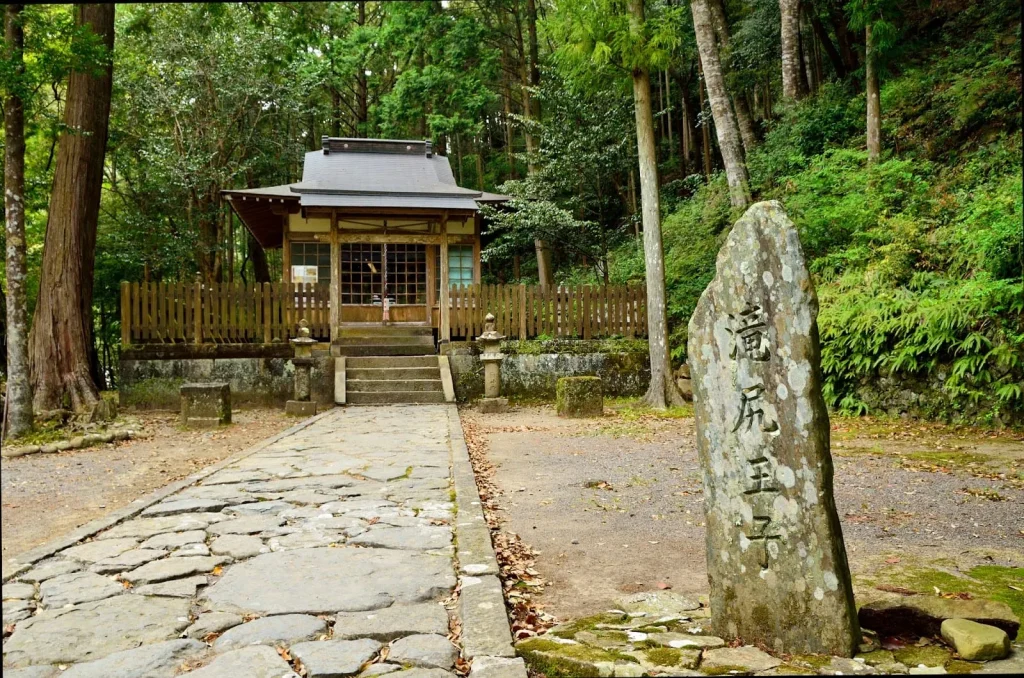
Walking along the Kumano Kodo pilgrimage routes, you will come across many sacred sites called Oji shrines. But what exactly are Oji shrines?
From the 12th to 13th centuries, emperors and aristocrats frequently undertook the Kumano pilgrimage — walking along the Kumano Kodo to worship at the Three Grand Shrines of Kumano. Unlike today, the journey was long and dangerous, often taking up to a month for the round trip.
These pilgrimages were guided by Shugenja (mountain ascetic monks), who played a spiritual role in leading the aristocrats. Along the routes, they recognized and organized local shrines built by villagers to honor regional deities. These were formally designated as Oji shrines, serving as places of prayer for protection on the journey.
In total, more than 100 Oji shrines are said to have existed along the Kumano Kodo. Collectively, they came to be known as the “99 Kumano Oji” (Kumano Kujuuku Oji) — with the number 99 symbolizing “countless.”
To learn more about the history of the Kumano Kodo and why it was inscribed as a UNESCO World Heritage Site, see this article.
Kumano Kodo Oji Shrines – Full List of the 99 Sacred Sites

The Kumano Kodo is believed to have 101 Oji shrines. In this article, we’ll guide you through them in sequence, from Osaka Prefecture to Nachikatsuura in Wakayama.
| 1 | Kubotsu-Oji | 21 | Nagaoka-Oji | 41 | Kaburasaka-Oji | 61 | Ueno-Oji | 81 | Jujo-Oji |
| 2 | Sakaguchi-Oji | 22 | Jizoudou-Oji | 42 | Yamaguchi-Oji | 62 | Tsui-Oji | 82 | Oosakamoto-Oji |
| 3 | Kouto-Oji | 23 | Umame-Oji | 43 | Itoga-Oji | 63 | Ikaruga-Oji | 83 | Chikatsuyu-Oji |
| 4 | Ueno-Oji | 24 | Nakayama-Oji | 44 | Sakagawa-Oji | 64 | Kirime-Oji | 84 | Hisohara-Oji |
| 5 | Abe-Oji | 25 | Yamaguchi-Oji | 45 | Kumesaki-Oji | 65 | KirimeNakayama-Oji | 85 | Tsugizakura-Oji |
| 6 | Tsumori-Oji | 26 | Kawanobe-Oji | 46 | Iseki-Oji | 66 | Iwashiro-Oji | 86 | Nakanokawa-Oji |
| 7 | Sakai-Oji | 27 | Nakamura-Oji | 47 | Konose-Oji | 67 | Senri-Oji | 87 | Kobiro-Oji |
| 8 | Ootori-Shin-Oji | 28 | Hanzaki-Oji | 48 | Umadome-Oji(east) | 68 | Minabe-Oji | 88 | Kumasegawa-Oji |
| 9 | Shinoda-Oji | 29 | Kawabata-Oji | 49 | Kutsukake-Oji | 69 | Haya-Oji | 89 | Iwagami-Oji |
| 10 | Hiramatsu-Oji | 30 | Wasa-Oji | 50 | Umadome-Oji(west) | 70 | Dedachi-Oji | 90 | Yukawa-Oji |
| 11 | Inokuchi-Oji | 31 | Hirao-Oji | 51 | Uchinohata-Oji | 71 | Akitsu-Oji | 91 | Inohana-Oji |
| 12 | Ikeda-Oji | 32 | Nakuchi-Oji | 52 | Takae-Oji | 72 | Maro-Oji | 92 | Hosshinmon-Oji |
| 13 | Asogawa-Oji | 33 | Matsusaka-Oji | 53 | Onaka-Oji | 73 | Misu-Oji | 93 | Mizunomi-Oji |
| 14 | Chikaki-Oji | 34 | Matsushiro-Oji | 54 | Hii-Oji | 74 | Yakami-Oji | 94 | Fushigami-Oji |
| 15 | Kuramochi-Oji | 35 | Bodaibou-Oji | 55 | Matsubara-OJI | 75 | Inabane-Oji | 95 | Haraido-Oji |
| 16 | Tsuruhara-Oji | 36 | Fujishiro-Oji | 56 | Zendouji-Oji | 76 | Ichinose-Oji | 96 | Yunomine-Oji |
| 17 | Sano-Oji | 37 | Fujishirotouge-Oji | 57 | Aitokusan-Oji | 77 | Ayukawa-Oji | 97 | Hama-Oji |
| 18 | Kashii-Oji | 38 | Kitsumoto-Oji | 58 | Kuama-Oji | 78 | Takijiri-Oji | 98 | Sano-Oji |
| 19 | Umayado-Oji | 39 | Tokorozaka-Oji | 59 | Iwauchi-Oji | 79 | Nezu-Oji | 99 | Hamanomiya-Oji |
| 20 | Shindachiichinose-Oji | 40 | Ichitsubo-Oji | 60 | Shioya-Oji | 80 | Daimon-Oji | 100 | Ichinono-Oji |
| 101 | Tafuke-Oji |
What are the Five Oji Shrines of the Kumano Kodo?
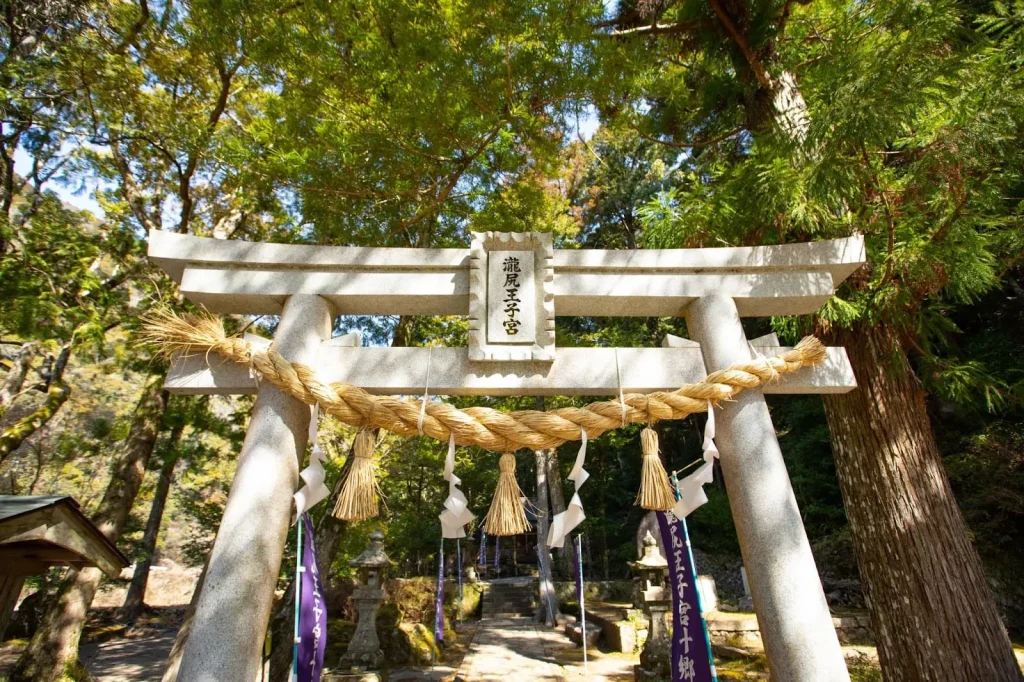
Among the 99 Kumano Oji shrines, five — Fujishiro Oji, Kirime Oji, Inabane Oji, Takijiri Oji, and Hosshinmon Oji — are known as the Five Oji Shrines (Gotai Oji) and are regarded as especially important.
These shrines are unique because they enshrine all of the deities known as the Gosho Oji, who are also worshipped at the Three Grand Shrines of Kumano (Kumano Hongu Taisha, Kumano Nachi Taisha and Kumano Hayatama Taisha). In contrast, ordinary Oji shrines typically enshrine only one of these deities.
Although there are various theories about which shrines qualify as the Five Oji, today the five listed above are generally recognized as such.
Best Hiking Routes on the Kumano Kodo to Visit Famous Oji Shrines

With over 100 Oji shrines along the Kumano Kodo, it can be difficult to visit them all.
This article introduces a recommended 2-day, 1-night route where you can visit seven Oji shrines. This route follows part of the Nakahechi, one of the most popular sections of the Kumano Kodo pilgrimage.
Day 1 Itinerary
JR Kii-Tanabe Station
↓ 30-minute walk
Misu Oji
↓ 35-minute walk
Yagami Oji
↓ 40-minute walk
Inabane Oji
↓ 2 hours 10 minutes on foot
Takijiri Oji
↓ 1 hour 30 minutes on foot
Takahara Kumano Shrine
↓ 5-minute walk
Stay overnight at SEN.RETREAT TAKAHARA and relax in the hot springs at Kirinosato Takahara.
On the first day, you will start from Kii-Tanabe Station and visit four Oji shrines. Among them, Takijiri Oji is especially significant, as it was regarded as the entrance to the sacred area of Kumano.
Because the distance between Inabane Oji and Takijiri Oji is long, it is a good idea to take a lunch break along the way.
Takahara Kumano Shrine is the oldest surviving shrine along the Kumano Kodo, known for its vividly painted shrine buildings and a majestic 1,000-year-old camphor tree. The area is also famous for its spectacular sea of clouds — and if you are lucky, you might just catch a glimpse!
After a full day of walking, soothe your body with a relaxing soak in the hot springs at Kirinosato Takahara and enjoy a delicious meal at SEN.RETREAT TAKAHARA. Here, you can savor BBQ and hot pot dishes made with fresh local ingredients. As the inn is a private rental, you can stay in complete privacy without worrying about other guests. At night, gather around the bonfire and share stories beneath a sky full of stars.

Day 2 Itinerary
Depart from the inn in the morning
↓ 1 hour 30 minutes on foot
Jujo Oji
↓ 2-hour walk
Ushiba Doji Statue
↓ 10-minute walk
Kumano Kodo Nakahechi Art Museum
↓ 1-minute walk
Chikatsuyu Oji
↓ 1-hour walk
Tsugizakura Oji and the Nonaka-no-Ipponsugi Cedar
↓ A short stroll
Toganoki Teahouse
↓ Just a few steps
Nonaka no Shimizu spring
↓ 20-minute walk
Nonaka-no-Ipponsugi Bus Stop
↓ 1 hour 20 minutes by bus
JR Kii-Tanabe StationDay 2 of this Kumano Kodo itinerary covers three Oji shrines. The trail is relatively flat and easy to walk, with plenty of attractions and cultural highlights to discover along the way.
Jujo Oji Shrine is quietly tucked away in a cedar forest, so be careful not to miss it!
The Kumano Kodo Nakahechi Art Museum was the first museum designed by the architectural duo SANAA (Kazuyo Sejima + Ryue Nishizawa), later famous for the 21st Century Museum of Contemporary Art in Kanazawa. The museum mainly features works by local painters Banka Nonagase and Ryoun Watase, both born in Nakahechi.
Chikatsuyu Oji Shrine is said to be one of the earliest of the 99 Oji shrines to be formally established. The surrounding area has long served as a rest stop for Kumano pilgrims, and today it is home to many restaurants and guesthouses.
At Tsugizakura Oji Shrine, you will find the legendary Nonaka-no-Ipponsugi Cedars — a grove of giant trees estimated to be over 800 years old. Remarkably, their branches extend only in the direction of Kumano Hongu Taisha, as if bowing in reverence to the sacred shrine.
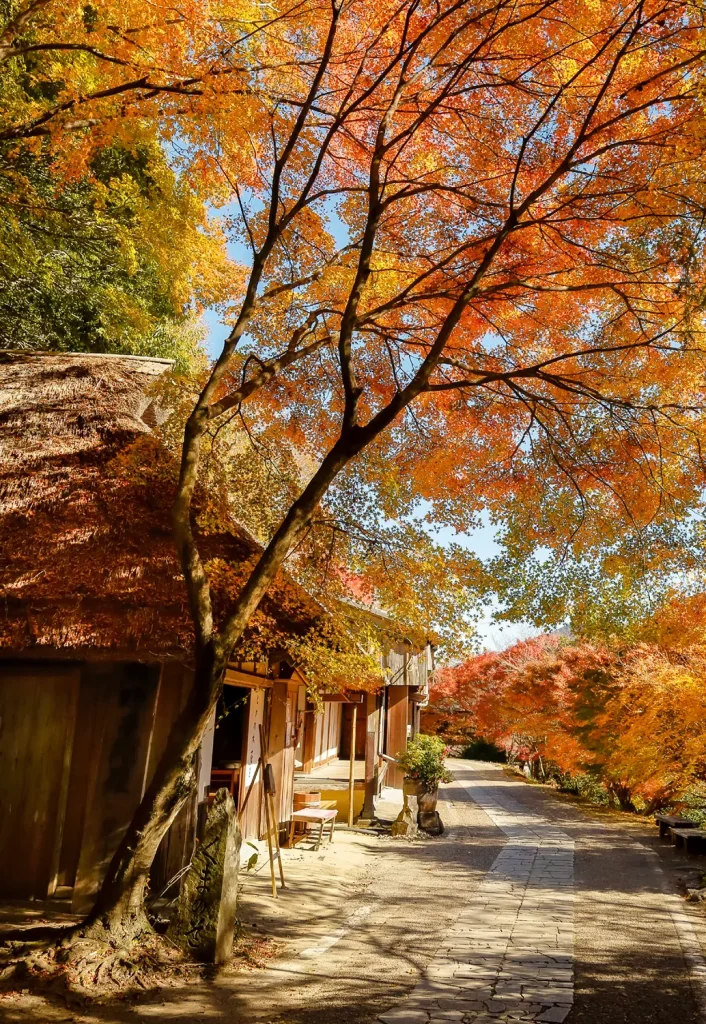
The area around Toganoki Teahouse is a great place to enjoy cherry blossoms in spring and autumn leaves in autumn.Open only on limited days, so stop here! Check the official Facebook page in advance to find out when it is open.
The area around Toganoki Teahouse is a beautiful spot to enjoy cherry blossoms in spring and colorful foliage in autumn. As the teahouse is only open on limited days, be sure to check the official Facebook page in advance if you plan to stop by.
Nearby, you’ll also find Nonaka no Shimizu, selected as one of Japan’s Top 100 Famous Waters. In the past, it must have been a vital source of drinking water for pilgrims walking the Kumano Kodo. As you follow the ancient trail today, you can still enjoy the same timeless scenery and imagine the journeys of travelers centuries ago.
Access to each Oji is as follows.
Misu Oji:1518 Shimomisu, Tanabe City, Wakayama Prefecture.(Map)
Yakami Oji:1337 Oka, Kamitonda-cho, Nishimuro-gun, Wakayama(Map)
Inabane Oji:2988-2, Iwata, Kamitonda-cho, Nishimuro-gun, Wakayama(Map)
Takijiri Oji:859 Kurisugawa, Nakaheji-cho, Tanabe City, Wakayama(Map)
Jujo Oji:1307 Ouchigawa, Nakaheji-cho, Tanabe City, Wakayama(Map)
Chikatsuyu Oji:901 Chikaro, Nakaheji-cho, Tanabe City, Wakayama(Map)
Tsugizakura Oji:Nonaka, Nakaheji-cho, Tanabe City, Wakayama Prefecture(Map)
More detailed information on each spot can be found in this article.











